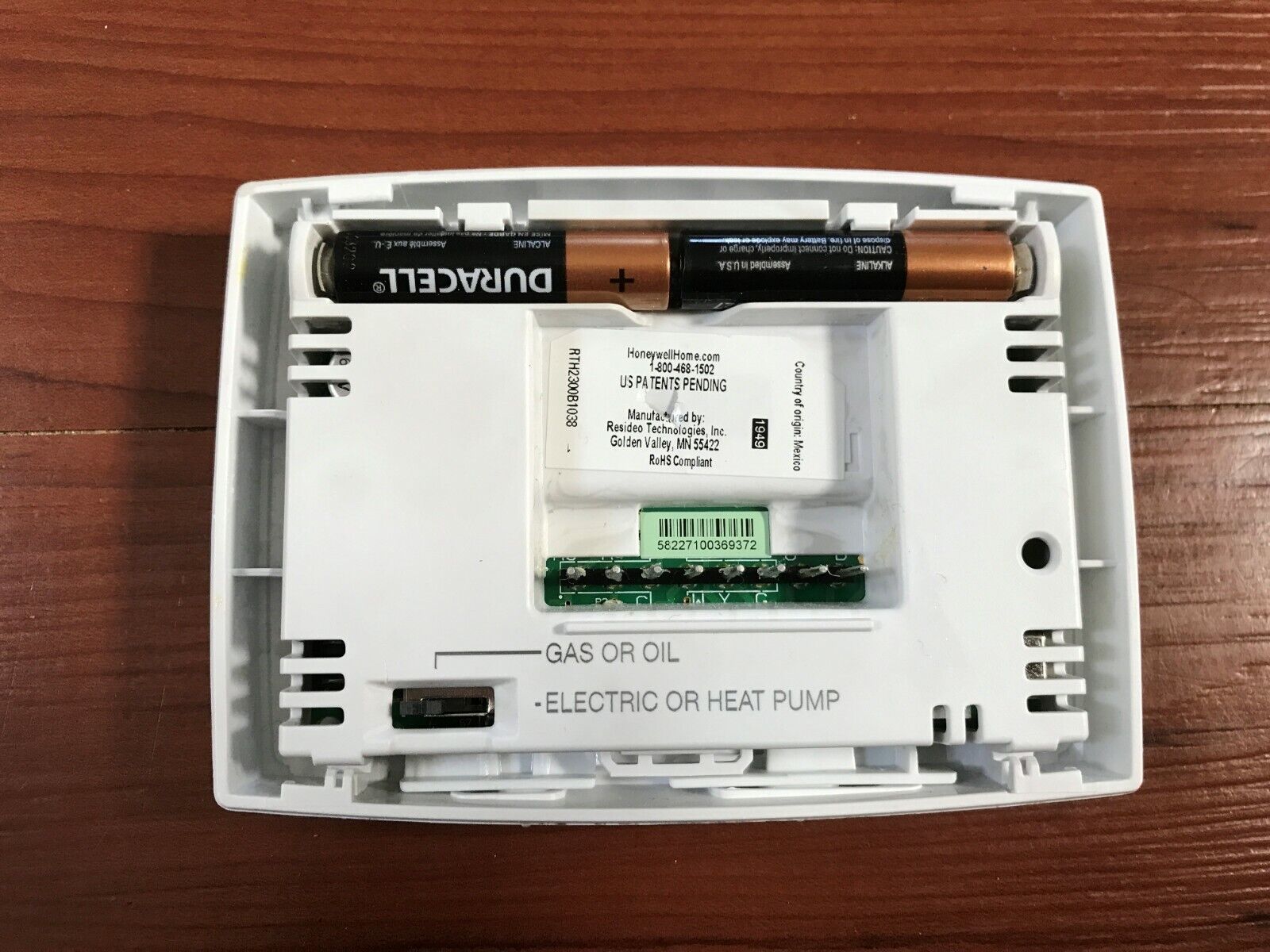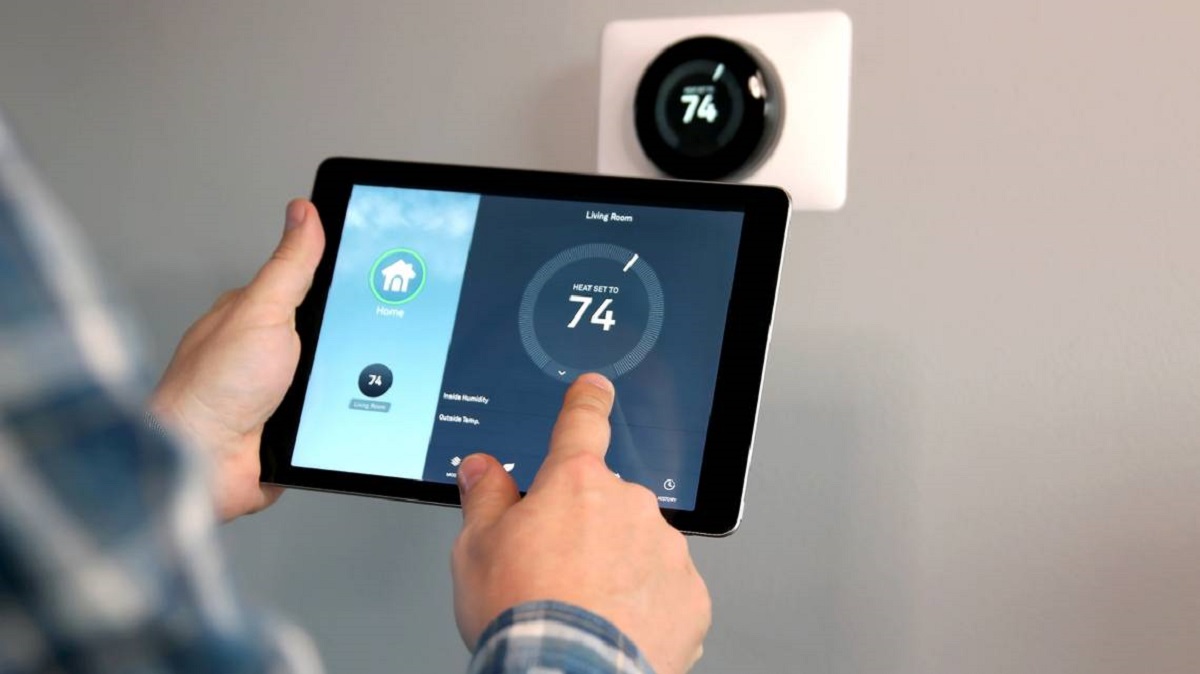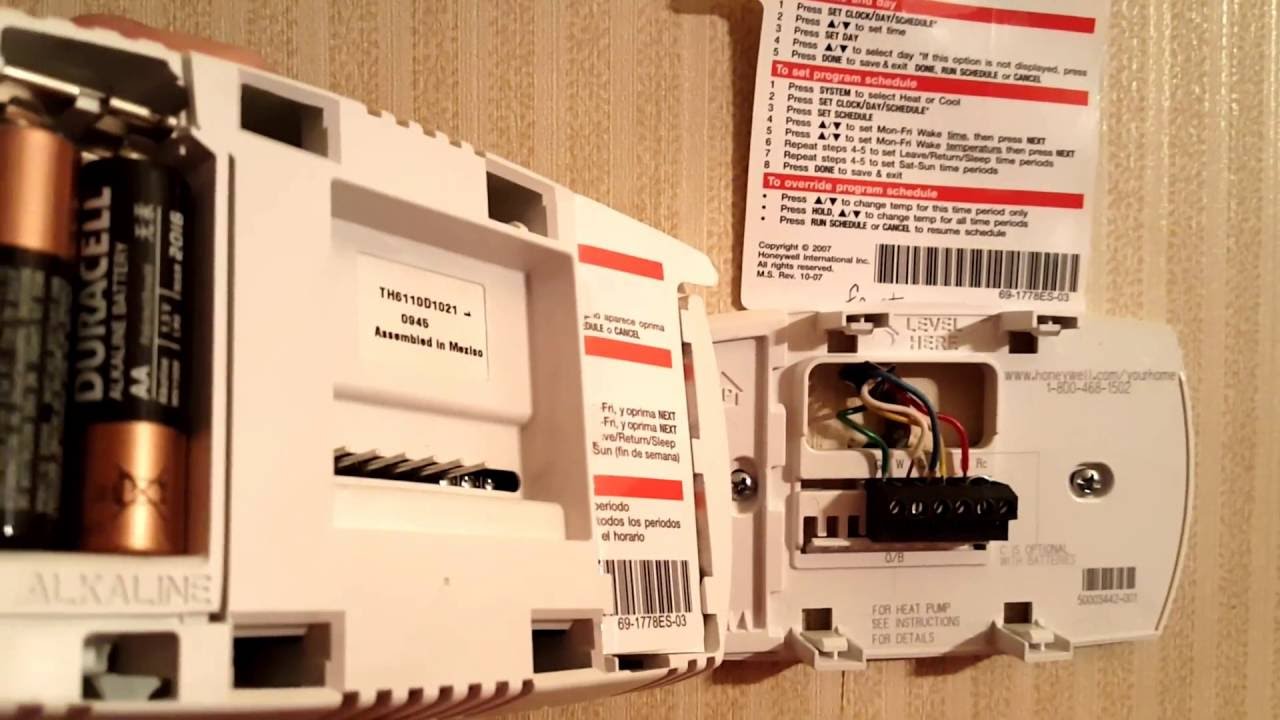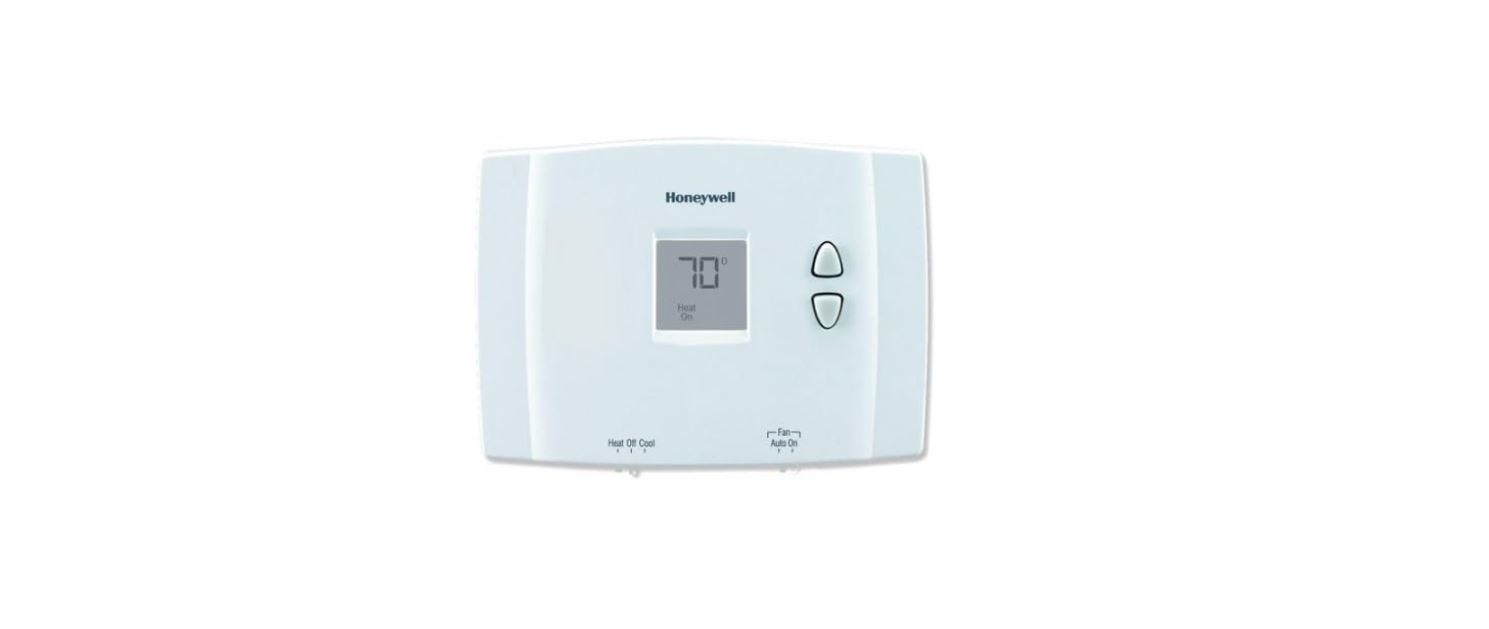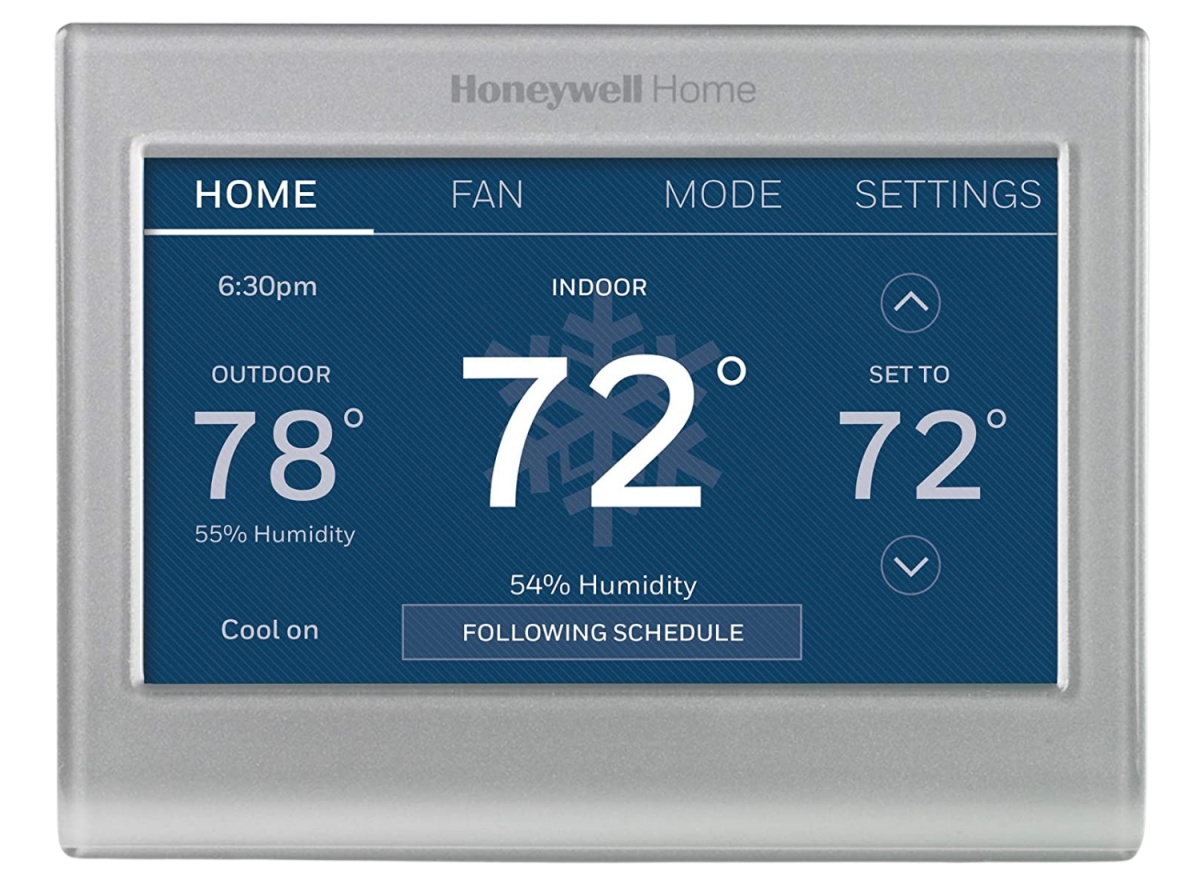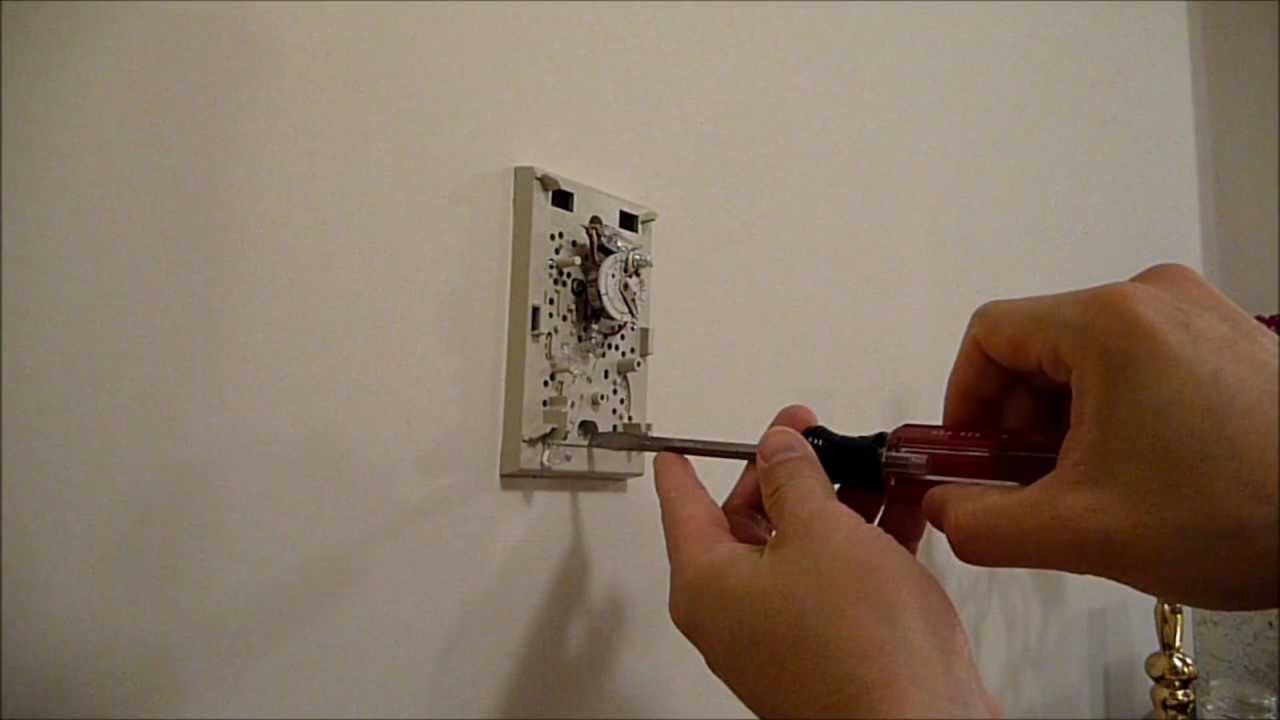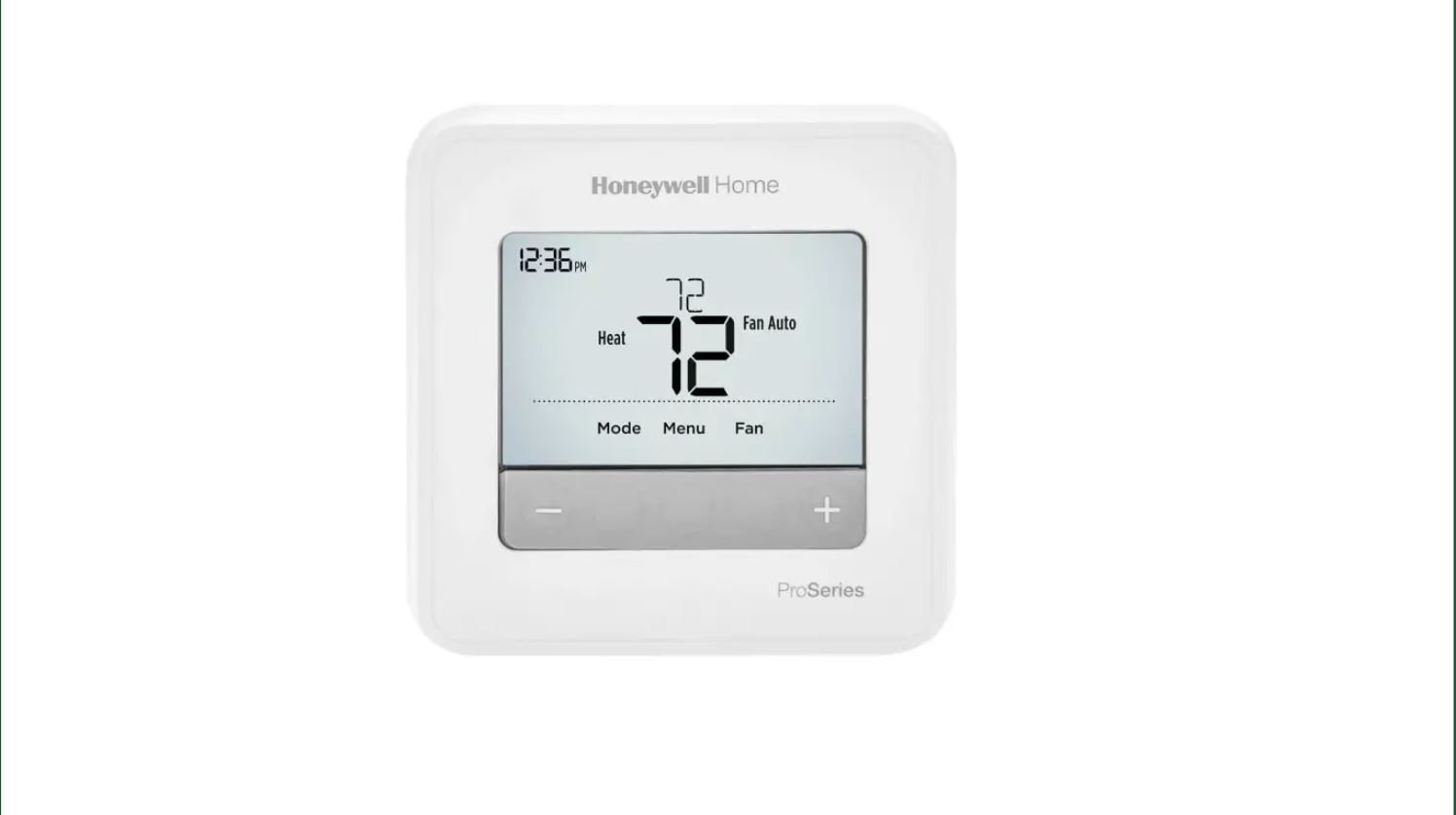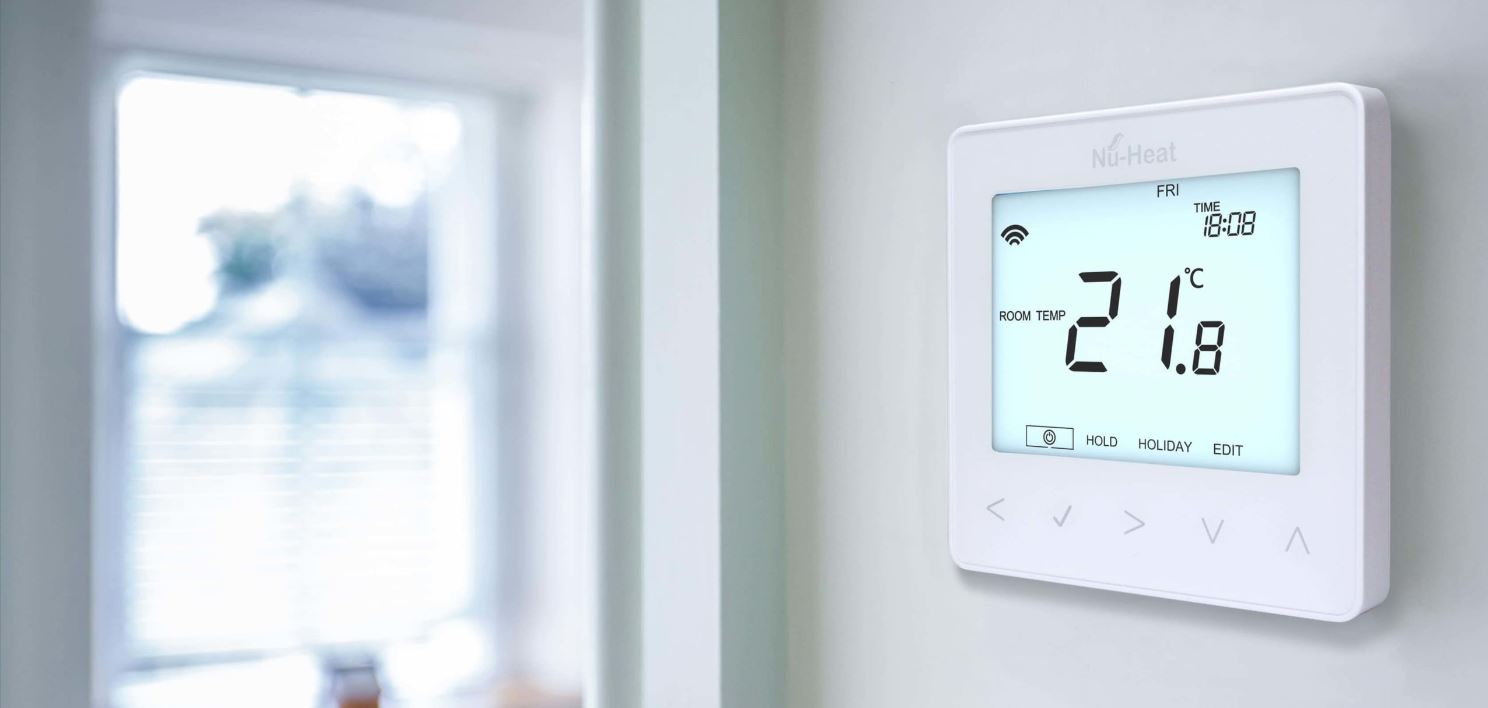Introduction
Welcome to this article on the batteries used in Honeywell thermostats. As technology continues to advance, thermostats have evolved from traditional models to digital ones, offering enhanced functionality and energy efficiency. While these advanced thermostats provide numerous benefits, they also require a power source to operate effectively.
Honeywell, a leading manufacturer of thermostat systems, designs their devices to be powered by batteries. This allows for easy installation and flexibility in terms of thermostat placement. In this article, we will explore the types of batteries used in Honeywell thermostats, how to change them, and how long they typically last.
If you are a homeowner or an HVAC technician looking to understand the battery requirements for Honeywell thermostats, this article will provide you with the information you need. So, let’s dive into the world of Honeywell thermostat batteries and their importance in keeping your heating and cooling systems functioning optimally.
Do Honeywell thermostats use batteries?
Yes, Honeywell thermostats do use batteries as a power source. Unlike traditional thermostats that are directly wired into the electrical system of a building, Honeywell thermostats are designed to be battery-powered. This design offers several advantages, including easier installation and the ability to operate the thermostat even during power outages.
Honeywell thermostats are typically equipped with a battery compartment located either on the back of the thermostat or within the thermostat itself. The specific type and number of batteries required may vary depending on the model of the thermostat.
It is important to note that while batteries are used to power the thermostat, they do not solely provide power for the heating and cooling functions of the HVAC system. The batteries primarily serve to power the display and internal programming of the thermostat, ensuring that it remains functional and accurate. The actual control of the HVAC system is commonly achieved through the electrical wiring connected to the HVAC unit.
Now that we know that Honeywell thermostats use batteries, let’s explore the different types of batteries that are compatible with these thermostats.
Types of Honeywell thermostat batteries
Honeywell thermostats are compatible with various types of batteries, offering options to suit different preferences and requirements. The most common types of batteries used in Honeywell thermostats include:
- AA alkaline batteries: AA alkaline batteries are widely available and easy to find. They provide a reliable power source and have a decent lifespan before needing replacement. They are often the recommended choice for most Honeywell thermostat models.
- AA lithium batteries: AA lithium batteries are another option for Honeywell thermostats. They offer a longer lifespan compared to alkaline batteries and are more resistant to extreme temperatures. This makes them ideal for thermostats in environments with significant temperature fluctuations.
- AAA lithium batteries: Some compact Honeywell thermostat models may require AAA batteries. Like the AA lithium batteries, they offer a longer lifespan and temperature resistance.
- C alkaline batteries: Although less common, some Honeywell thermostat models may use C alkaline batteries. These larger batteries provide extended power supply and are suitable for thermostats with higher power requirements.
- CR2032 lithium batteries: CR2032 lithium batteries are typically used in Honeywell thermostats for backup purposes. These button cell batteries are responsible for maintaining the thermostat’s internal clock and programming during power outages.
It is crucial to refer to the user manual or specific product documentation for your Honeywell thermostat to determine the exact type and number of batteries required. This will ensure compatibility and optimal performance of your thermostat.
Now that we have explored the types of batteries compatible with Honeywell thermostats, let’s proceed to understand the process of changing the batteries.
AA alkaline batteries
AA alkaline batteries are one of the most commonly used types of batteries for Honeywell thermostats. These batteries are readily available at most stores and provide a reliable power source for the thermostat.
The AA alkaline batteries are known for their longer lifespan compared to other types of batteries. Depending on the model of the Honeywell thermostat and its usage, AA alkaline batteries can last anywhere from 6 to 12 months before needing to be replaced.
When choosing AA alkaline batteries for your Honeywell thermostat, it is recommended to opt for reputable brands to ensure quality and reliability. High-quality batteries typically have better performance and longer lifespans.
To replace the AA alkaline batteries in your Honeywell thermostat, follow these steps:
- Locate the battery compartment on the back of the thermostat or within the thermostat itself.
- Open the battery compartment by either sliding it open, using a screwdriver to remove the cover, or following the manufacturer’s instructions.
- Remove the old batteries from the compartment, paying attention to the correct polarity (+ and -).
- Insert the new AA alkaline batteries into the compartment, ensuring proper alignment of the polarity.
- Close the battery compartment securely.
After replacing the batteries, your Honeywell thermostat should power up and display the necessary information on the screen. If the thermostat does not turn on, double-check that the batteries are inserted correctly and that the battery compartment is securely closed.
Regularly check the battery status on your Honeywell thermostat to ensure that the batteries are functioning correctly. This will help prevent any unexpected power interruptions and ensure that your thermostat and HVAC system continue to operate smoothly.
In the next section, we will explore another type of battery commonly used in Honeywell thermostats – AA lithium batteries.
AA lithium batteries
AA lithium batteries are an alternative power source for Honeywell thermostats. These batteries offer several advantages over traditional alkaline batteries, making them a popular choice for users seeking longer-lasting power.
One significant advantage of AA lithium batteries is their extended lifespan. They can last up to 6 times longer than alkaline batteries, providing continuous power to your Honeywell thermostat for an extended period. This makes them a great option for users who want to minimize the frequency of battery replacement.
Another advantage of AA lithium batteries is their ability to perform well even in extreme temperatures. Whether you live in a region with extremely hot or cold climates, AA lithium batteries can withstand temperature variations without compromising their performance. This feature ensures the uninterrupted operation of your Honeywell thermostat throughout the year.
When replacing AA alkaline batteries with AA lithium batteries in your Honeywell thermostat, it is important to note that the two types are interchangeable in most models. However, refer to the specific product documentation or user manual to confirm compatibility.
To replace the AA alkaline batteries with AA lithium batteries:
- Locate the battery compartment on the Honeywell thermostat.
- Open the compartment as per the manufacturer’s instructions (sliding open, removing a cover, etc.).
- Remove the old AA alkaline batteries from the compartment.
- Insert the new AA lithium batteries into the compartment, ensuring proper alignment of the polarity.
- Securely close the battery compartment.
Once the AA lithium batteries are installed, your Honeywell thermostat should power up and resume normal operation. Remember to regularly check the battery status to ensure optimal performance and replace the batteries when necessary.
In the next section, we will discuss another type of lithium battery used in Honeywell thermostats – AAA lithium batteries.
AAA lithium batteries
While AA batteries are commonly used in Honeywell thermostats, some compact models may require AAA batteries instead. AAA lithium batteries offer similar advantages to their AA counterparts but in a smaller form factor.
AAA lithium batteries provide a longer lifespan compared to standard alkaline batteries. This means that you won’t have to replace them as frequently, ensuring that your Honeywell thermostat remains powered for an extended period of time.
One notable advantage of AAA lithium batteries is their ability to perform well in extreme temperatures. Just like AA lithium batteries, AAA lithium batteries can tolerate both hot and cold environments without compromising their performance. This makes them suitable for thermostats located in areas with significant temperature variations.
When replacing the AAA batteries in your Honeywell thermostat with AAA lithium batteries, follow these steps:
- Locate the battery compartment on your Honeywell thermostat.
- Open the battery compartment according to the manufacturer’s instructions.
- Remove the old AAA batteries from the compartment, paying attention to the correct polarity.
- Insert the new AAA lithium batteries into the compartment, ensuring proper alignment of the polarity.
- Securely close the battery compartment.
Once the new AAA lithium batteries are installed, your Honeywell thermostat should power on and function normally. Remember to regularly check the battery status and replace the batteries as needed for uninterrupted operation.
In the next section, we will discuss another type of battery that may be used in certain Honeywell thermostat models – C alkaline batteries.
C alkaline batteries
While AA and AAA batteries are the most commonly used types for Honeywell thermostats, there are some models that require C alkaline batteries. C alkaline batteries are larger and provide a higher capacity compared to AA or AAA batteries, making them suitable for devices with higher power requirements.
If your Honeywell thermostat requires C alkaline batteries, it is important to follow the manufacturer’s instructions and specifications to ensure compatibility and optimal performance. The user manual or product documentation will provide the necessary information on the type and number of C alkaline batteries required.
Replacing the C alkaline batteries in your Honeywell thermostat follows a similar process to replacing other battery types:
- Locate the battery compartment on your Honeywell thermostat.
- Open the battery compartment as instructed by the manufacturer.
- Remove the old C alkaline batteries from the compartment, paying attention to the correct polarity (+ and -).
- Insert the new C alkaline batteries into the compartment, ensuring proper alignment.
- Securely close the battery compartment, ensuring a tight fit.
Once the C alkaline batteries are inserted and the battery compartment is closed, your Honeywell thermostat should power on and operate as usual.
It is important to note that C alkaline batteries may not be as widely available as AA or AAA batteries. Ensure you have access to a reputable supplier or store that stocks C alkaline batteries when it’s time for replacements.
Now that we have covered C alkaline batteries, let’s move on to discussing another type of battery used in Honeywell thermostats – CR2032 lithium batteries.
CR2032 lithium batteries
CR2032 lithium batteries are not used as the primary power source for Honeywell thermostats. Instead, they serve as backup batteries for maintaining important functions, such as the internal clock and programming, during power outages or when the main power source is disconnected.
The CR2032 lithium battery is a small button cell battery that is commonly used in various electronic devices. Its compact size makes it suitable for use in thermostats with limited space for battery compartments.
Although the CR2032 battery is primarily responsible for backup power, it is essential for ensuring that your Honeywell thermostat retains its programmed settings and accurate time display, even during power disruptions.
Replacing the CR2032 lithium battery in your Honeywell thermostat is a straightforward process:
- Locate the battery compartment on your Honeywell thermostat.
- Open the battery compartment carefully as per the manufacturer’s instructions.
- Remove the old CR2032 lithium battery, paying attention to the correct polarity.
- Insert the new CR2032 lithium battery into the compartment, ensuring proper alignment.
- Gently close the battery compartment, taking care not to damage the battery or the compartment.
Once the new CR2032 lithium battery is installed, your Honeywell thermostat’s internal clock and programming should remain intact during power outages or when the main power source is disconnected. This ensures that your thermostat continues to function as intended once power is restored.
It is generally recommended to replace the CR2032 lithium battery every 3 to 5 years, even if no power disruptions have occurred. This helps ensure reliable backup power and prevents potential issues arising from an expired battery.
Now that we have covered the various battery types used in Honeywell thermostats, let’s move on to discussing how to change batteries in these thermostats.
Changing the batteries in a Honeywell thermostat
Changing the batteries in a Honeywell thermostat is a simple and straightforward process. Follow these steps to ensure a successful battery replacement:
- Locate the battery compartment on your Honeywell thermostat. It is typically located on the back of the thermostat or within the thermostat itself.
- Depending on the model, you may need to use a screwdriver or simply slide open the battery compartment to access the batteries.
- Remove the old batteries from the compartment, paying attention to the correct polarity (+ and -).
- Take note of the battery type and the required number of batteries specified in the user manual or product documentation.
- Insert the new batteries into the compartment, aligning the polarity correctly.
- Securely close the battery compartment, ensuring a tight fit.
After changing the batteries, your Honeywell thermostat should power up and display the necessary information on the screen. If the thermostat does not turn on, double-check that the batteries are inserted correctly and that the battery compartment is securely closed.
It is important to note that some Honeywell thermostat models may have additional battery-saving features or settings that can help prolong battery life. Exploring these options and adjusting settings accordingly can optimize battery performance and reduce the frequency of battery replacements.
Regularly check the battery status on your Honeywell thermostat to ensure that the batteries are functioning correctly. If you notice any issues with battery life or performance, consider checking the battery connections, replacing the batteries, or contacting Honeywell customer support for further assistance.
Now that we have covered how to change the batteries in a Honeywell thermostat, let’s explore the typical lifespan of these batteries.
How long do Honeywell thermostat batteries last?
The lifespan of Honeywell thermostat batteries can vary depending on factors such as the battery type, usage patterns, thermostat model, and environmental conditions. It is important to have a general understanding of how long the batteries in your Honeywell thermostat are expected to last to ensure optimal performance.
For AA or AAA alkaline batteries, which are commonly used in Honeywell thermostats, the average lifespan can range from 6 to 12 months. However, this estimate is not set in stone and can vary based on factors such as the frequency of adjustment to temperature settings, the use of backlighting, and the overall demands placed on the thermostat.
If you opt for AA or AAA lithium batteries, which have a longer lifespan compared to alkaline batteries, you can expect them to last even longer. On average, AA or AAA lithium batteries can provide power to your Honeywell thermostat for up to 2 to 3 years.
For C alkaline batteries, the larger size allows for a higher capacity and, therefore, a longer lifespan. C alkaline batteries can typically last anywhere from 12 to 24 months, depending on the thermostat model and usage patterns.
The CR2032 lithium battery, which serves as a backup battery for maintaining functions during power outages or when the main power source is disconnected, usually has a lifespan of approximately 3 to 5 years. It is important to replace this battery within this recommended timeframe to ensure reliable backup power.
Keep in mind that these are general estimates, and actual battery lifespan may vary. It is always a good practice to monitor the battery status on your Honeywell thermostat and replace the batteries when needed. In some thermostat models, there may be low battery indicators or alerts to notify you when it is time for a battery change.
Additionally, factors such as extreme temperatures, frequent adjustments to settings, and the use of additional features like Wi-Fi connectivity can all impact the battery lifespan. To maximize battery life, you can also consider adjusting thermostat settings and using energy-saving features, such as reducing backlight brightness or using a power-saving mode.
By being aware of the typical lifespan of Honeywell thermostat batteries and implementing energy-saving practices, you can ensure that your thermostat functions optimally and avoids unexpected power disruptions.
Now that we have explored the lifespan of Honeywell thermostat batteries, let’s conclude this article with a summary of the key points discussed.
Conclusion
In this article, we have explored the batteries used in Honeywell thermostats. We learned that Honeywell thermostats use batteries as a power source, providing the advantage of easy installation and flexibility in placement. We discussed the various types of batteries compatible with Honeywell thermostats, including AA alkaline batteries, AA lithium batteries, AAA lithium batteries, C alkaline batteries, and CR2032 lithium batteries.
We discussed how to change the batteries in a Honeywell thermostat, emphasizing the importance of following manufacturer instructions and ensuring proper alignment of the battery polarity. Regularly checking the battery status and replacing batteries when needed is crucial for uninterrupted operation.
We also addressed the typical lifespan of Honeywell thermostat batteries. Depending on the battery type and usage, the lifespan can range from 6 to 12 months for AA or AAA alkaline batteries, up to 2 to 3 years for AA or AAA lithium batteries, and 12 to 24 months for C alkaline batteries. The CR2032 lithium battery, serving as a backup battery, typically lasts 3 to 5 years.
By understanding the battery requirements of Honeywell thermostats and following proper maintenance, users can ensure that their thermostats function reliably and efficiently, providing accurate temperature control and programming. Regularly checking and replacing batteries when needed will prevent unexpected power disruptions and maintain optimal performance.
As you utilize your Honeywell thermostat, it is always recommended to consult the product documentation or user manual specific to your thermostat model to ensure compatibility and for any additional guidance related to battery replacement.
With this knowledge, you can confidently navigate the world of Honeywell thermostat batteries and ensure that your heating and cooling systems remain operational and efficient.







